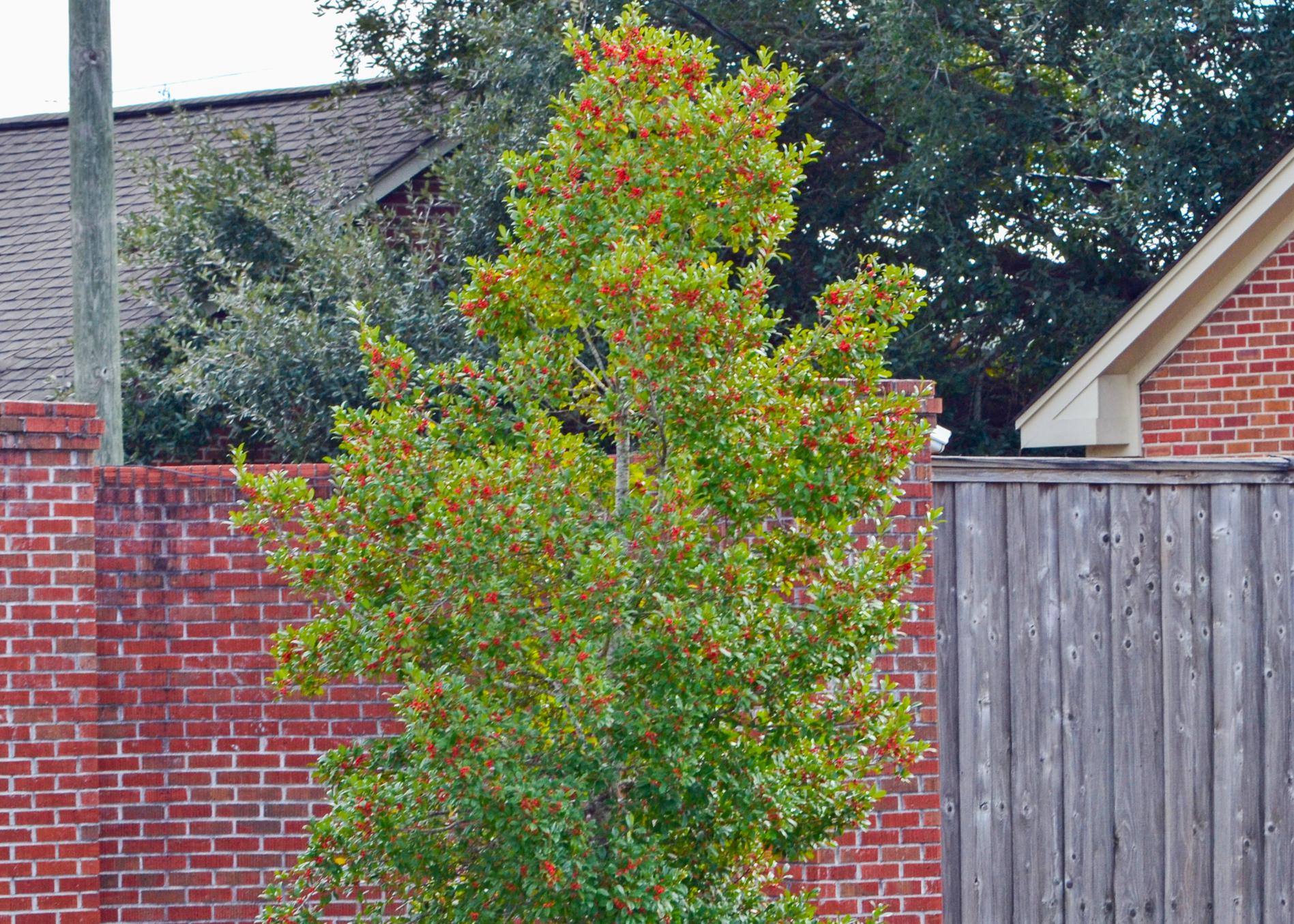Savannah holly’s berries beautify winter landscape
I find it challenging to keep the landscape vibrant and colorful during winter, but incorporating plants with vibrant berries can add a pop of color to the winter scenery.
The Savannah holly, which is a hybrid of the native American holly, is one of the best options to bring that berry color to Mississippi gardens.
I recently visited Adams Nursery and Garden Center in Petal and saw some stunning berries on their hollies. The Savannah holly caught my eye with its natural pyramidal shape and branches with bright red berries.
This evergreen plant has a loose and open growth habit, making it suitable for specimen planting. The Savannah holly is a moderate-growing shrub that can even develop into a small tree, reaching up to 35 feet tall.
This holly’s foliage is typically a dull, light green. Leaves have soft spines along the leaf margins, distinguishing them from hollies with dark glossy green leaves like the Nellie R. Stevens holly tree. The trunk and branches of the Savannah holly are a smooth texture and range in color from light to medium gray.
The real highlight of the Savannah holly occurs between November and March when tight clusters of fluorescent red berries form towards the branch ends. These berries can brighten up any winter landscape and catch the eye of people passing by.
Beyond its horticultural appeal, Savannah holly holds cultural significance, especially in the southern United States. Its use in landscaping and gardens imparts a touch of elegance to outdoor spaces. Its evergreen nature makes it a popular choice for winter holiday decorations where its bright berries add a festive pop of color to wreaths and arrangements.
Holly flowers are attractive to bees and other pollinators, and the berries are a great food source for birds and other wildlife. People should not eat the berries and should seek medical attention if ingested.
A few planting and care practices will ensure the Savannah holly’s health and vibrancy.
Savannah holly thrives in well-drained soil and prefers full to partial sunlight, making the selection of an appropriate planting location crucial. Regular watering, especially during dry periods, is essential in the early stages of establishment. Once mature, it is relatively drought tolerant but benefits from consistent moisture.
Pruning is best done in late winter or early spring and helps shape the plant, which encourages optimal growth.
It’s worth noting that Savannah holly is dioecious, meaning individual plants are either male or female. Both male and female trees produce small white flowers, but the flowers are not readily noticeable. It is recommended that you plant a female specimen near a male holly for pollination.
Most nurseries propagate and sell female Savannah hollies. To ensure the best berry production possible, consider planting Jersey Knight hollies as pollinating companion plants to Savannah hollies.
Jersey Knight is a male holly and an excellent pollinator for almost all varieties of female holly trees. Only one is needed for pollination, but planting additional male hollies will increase pollination.
When male and female Savannah hollies are grown together, the evergreens will flourish, displaying glossy foliage and vibrant berries. It is a resilient and visually appealing complement to the landscape.
The Savannah holly is an excellent choice for any Mississippi garden. Its versatility and natural beauty make it a favorite among landscape hollies. If you’re looking for a way to enhance your winter landscape, consider incorporating the Savannah holly.





